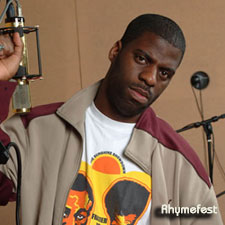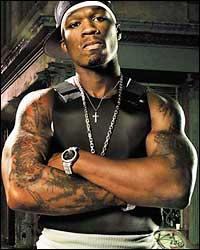

We recently sat down with pioneering Hip Hop photographer Ernie Paniccioli to get some insight into his long career which began years before the first rasps were being kicked in the Bronx. He broke down a lot of stuff for us. he also let us know about his new movie called ‘The Otherside of Hip Hop‘ which chronicles his life. The movie which has already been shown in festivals around the country to rave reviews and features Chuck D, MC Lyte and Afrika Bambaataa to name a few will be showing at the Tribeca Film Festival this weekend; Saturday November 17th, 2007 2pm Tribeca Cinemas NYC Laight and Canal St.
info and tickets available at www.bigapplefilmfestival.com
Davey D
 Davey D: Lately there are a number of books and exhibits coming out highlighting the works of pioneering Hip Hop photographers.. What do you think is behind this resurgence? In what ways do these works add to or take away from the Hip Hop’s history?
Davey D: Lately there are a number of books and exhibits coming out highlighting the works of pioneering Hip Hop photographers.. What do you think is behind this resurgence? In what ways do these works add to or take away from the Hip Hop’s history?
Ernie Paniccioli:When a book is done from within the culture by someone like Joe Conzo (“Born In The Bronx”) or myself (“Who Shot Ya?”) or an exhibit shows the work of Harry Allen or a Martha Cooper “Hip Hop Files” it can only deepen the history and knowledge of Hip Hop Culture. When a “Culture Vulture” does a book or tries to lay claim to be “The Bible of Hip Hop Art and Politics” style magazine or a trick ass radio station claims to be “Where Hip Hop Lives” then things get ugly and commercially distorted.
Davey D:Contrasted with Rock-N-Roll and other genres what challenges are unique to the Hip Hop photographer? What has been your biggest accomplishment? What has been your biggest gripe?
 Ernie Paniccioli:Rock and Roll is bought by, financed by and nurtured by White America and is simply Rock Music. Hip Hop is from the streets, ghettos, inner-cities and is comprised of 5 Elements. A Rock Photographer only has to shoot rockers and is usually paid by a record company or big money magazine.
Ernie Paniccioli:Rock and Roll is bought by, financed by and nurtured by White America and is simply Rock Music. Hip Hop is from the streets, ghettos, inner-cities and is comprised of 5 Elements. A Rock Photographer only has to shoot rockers and is usually paid by a record company or big money magazine.
A Hip Hop Photographer has to capture the DJ, Hip Hop Dance, Graf, Emcee, and be aware of and respond to the Cultural aspects of Hip Hop. If all they do is shoot Rappers then they are at best a Rap Photographer. In it’s 33 year His-Story there have only been a handful of photographers that can be called “Hip Hop Photographers”. My legacy is secure because I have been called that by Afrika Bambaataa, Chuck D and KRS1 as well as Nas and Rakim.
My greatest accomplishment has been staying true to the culture decade after decade and my biggest gripe is seeing this amazing art form, that gave us a global voice, being used instead of addressing survival issues, selling sneakers, rims, cars, burgers and really crappy clothes.
 Davey D:What sort of equipment did you start off using? What are you using now? Does new technology make things easier? Is their something loss with all the photo-shopping and digitizing of photos?
Davey D:What sort of equipment did you start off using? What are you using now? Does new technology make things easier? Is their something loss with all the photo-shopping and digitizing of photos?
Ernie Paniccioli:I started out with a Canon AE1 and a 50MM lens. I now use Leica and Nikon 35 MM Digital and Mamiya Medium Format. I personally love PhotoShop for cleaning up and restoring old photographs. If you suck or have no soul, Photoshop will not help you, if you are dope all of these photo aids will only make your work more profound.
Davey D:You served in the Vietnam and there you took lots of photos and made collages capturing the social and political climate of the time.. How did your experiences in Nam help you when you started doing Hip Hop photography?
Ernie Paniccioli:Having the experience of life and death and discipline, training for war and being responsible for the safety of others gave me a sense of responsibility which I came to understand meant a response to the best of your ability. It also prepared me to go anywhere to shoot my subjects, either in a dark club full of drunk or stoned and often violent rap fans or in a project hallway or gang banger territory.

Davey D:Talk about the importance of archiving history through photography and other means.With you being a Native American brother what lessons can the Hip Hop generation learn from the trials and tribulations experienced by Native people?
Ernie Paniccioli:Edward Curtis is my greatest influence. He shot the tribes across the continent under almost impossible odds but always with pride, intelligence and dignity. Without him the visual legacy of native Americans would be greatly diminished. I have always tried to do the same by infusing my work with dignity, pride and a sense of honor and one of the ways is to keep in mind that we are all spiritual being with a soul and an inner power and beauty.
Forgive me for getting too deep but just as Native People were considered “savages” and not worthy of land or protection of law (look up the writings of the amazing Professor Robert A. Williams of The University of Arizona) after nearly a decade of dehumanizing music videos, CD’s and movies portraying Black Southeners as subhuman, sexually deviant, drug addled and shiftless drug dealers and pimps along comes Katrina and the non reaction of FEMA and America tolerates the sight of swollen Black bodies floating like debris in the water.
Davey D:Creating photo collages shows you have an artistic side, are there any other areas that you have talents and skillz especially as it relates to Hip Hop? i.e. Did you rap, b-boy or dj?
Ernie Paniccioli:I was a painter, and drew thousands of pictures before I even picked up a camera, art , museums, and creativity always was part of my flow decades before I even held my first gallery show. I was never B-Boy or DJ, but have rocked hundreds of mics lecturing on Human Rights, Native Rights and Survival.
Davey D:Who was the first person you photographed within Hip Hop? What do you feel is your most important photo? What is your most haunting photo?
Ernie Paniccioli:My first Hip Hop images were of Graffiti masterpieces and they were what drew me in to Hip Hop. My most important photo has not been shot yet. My two most haunting photos are both of BIG. One is of him going up a flight of stairs with angels in the background and the other is him sitting next to me in his Jeep holding his fingers in the form of a gun.
 Davey D:The other side of Hip Hop is a movie based on your life. What are 2 or 3 keys aspects you want people to come away with after seeing this movie?
Davey D:The other side of Hip Hop is a movie based on your life. What are 2 or 3 keys aspects you want people to come away with after seeing this movie?
How to make something out of nothing and survival based upon your love of your environment. Back when I started it was hard to make a living as a photographer so I single handedly created the job title of Hip Hop Photographer
Davey D:
In your book Who Shot Ya? you wrote a powerful essay about the Hip Hop being colonized. First what did you mean by that? Do you still feel like that is happening even with artists like Jay-Z, 50 and Diddy having so much money? Is this a concept you focus on in your new movie?
Ernie Paniccioli:In “Who Shot Ya?” When I warned of the coming (it was written in 2001) colonization of Hip Hop I was referring to the consolidation of broadcast media and how we went from independent media outlets to the complete control of all forms of media by three or four superpowers including Clear Channel, Viacom, BMI, Rupert Murdoch, Vivendi etc.
Also colonization means the selling of a culture, where once you were judged cool or hip by your visual individuality now you are considered cool if you wear pre-packaged-New Era style, Vibe endorsed over priced corny crap.
The money that Russell Simmons, Jay Z and Diddy/Puffy/Puff/ Puff Daddy have means nothing to the culture itself and realistically is only pennies in the total income of those who pimp Hip Hop in the name of corporate interests.
The film “The Other Side of Hip Hop” deals with individual freedom, collective responsibility and the unique set of circumstances that connected me to the birth of Hip Hop.
 Davey D:Also in your book you stated that the most groundbreaking group in Hip Hop was Arrested Development. You said they were important because their name reflected the current state of Hip Hop. Can you elaborate on that?
Davey D:Also in your book you stated that the most groundbreaking group in Hip Hop was Arrested Development. You said they were important because their name reflected the current state of Hip Hop. Can you elaborate on that?
Ernie Paniccioli:I saw that name as a vibrant metaphor for what Chuck D calls “being stuck on stupid” I did not mean they were in and of themselves groundbreaking, even though they did feature women, men and an elder as part of a rhythmic collective.
And yes the current state of Hip Hop is pitiful as least the Rap component that shows 30 or 40 something year old men acting like overeager, horny teenagers and the women portrayed as less than dignified, classy, smart or even interesting for anything more than their cup size.
Davey D:You are obviously older then Hip Hop which just celebrated its 33rd anniversary. As an elder did you see the handwriting on the wall that would lead to Hip Hop being birthed? In other words did you see this coming or was it a sudden explosion that caught everyone off guard?
Ernie Paniccioli:First, I have to go against the prevailing dogma and state that even though all of the elements were there they were not known collectively as “HIP HOP”. Bambaataa and Kool Herc created the consciousness of the disparate elements as essential parts of a whole.
Back then everyone knew something was happening, Disco was dying, Punk was a little too White and a little to over the edge, Rhythm and Blues had run their course and the kids were restless and conditions in our cities were simply too horrible for them to believe in anything not reflecting or created by them. As Dylan said “You know something is happening, but you don’t know what it is, do you Mr. Jones?”
 Davey D: You now have movie out? Was it difficult to get this up and running? What are you next steps?
Davey D: You now have movie out? Was it difficult to get this up and running? What are you next steps?
Ernie Paniccioli:The movie “The Other Side of Hip Hop” is going to be shown in film festivals, then used to teach in the college and high school lecture circuits and even as a fund raiser for worthy causes. Dion Ashman created it and he simply had to follow his vision and respect what I have tried to stand for in my life. Dion is an Alpha and had to measure up to the standards of his organization.
Koe Rodriquez wants to finish a film called 1Love which deals with the creative forces of myself, Joe Conzo and Jamal Shabazz. And I am trying to get a five volume set of books published covering the first ever 30 year retrospective of my photography but have so far not met up with the right set of circumstances. The five volume set is already completed and has essays by most of the creative forces in Hip Hop. Perhaps Jay, Diddy or Russell would like to invest in something culturally powerful and make me an honest offer.
Davey D: any last words or food for thought..
Ernie Paniccioli:As KRS1 said so clearly……….”When you walk, walk with authority……..tell the negative people don’t bother me”
Peace, Bro. Ernie Paniccioli
The Otherside of Hip Hop is now available on demand for more informationcheck out the website http://hiphopotherside.com/welcome-to-hip-hop.php


 Here’s a message to the Iranian Youth…Hip Hop is with you. We understand that what is going on in Iran is not about what America wants. We understand that this is not about the dictates of those who have a particular foreign policy agenda to push that at the end of the day may be calling for Iran to be destabilized.
Here’s a message to the Iranian Youth…Hip Hop is with you. We understand that what is going on in Iran is not about what America wants. We understand that this is not about the dictates of those who have a particular foreign policy agenda to push that at the end of the day may be calling for Iran to be destabilized. 


 Back in 1865, two years and some change after Abe Lincoln’s Emancipation Proclamation, the slaves in Texas finally got the memo that chattel slavery had been abolished. Better late than never I suppose. However, if the right wing talking heads had their way, black folks would still be picking cotton in 2009.
Back in 1865, two years and some change after Abe Lincoln’s Emancipation Proclamation, the slaves in Texas finally got the memo that chattel slavery had been abolished. Better late than never I suppose. However, if the right wing talking heads had their way, black folks would still be picking cotton in 2009.






